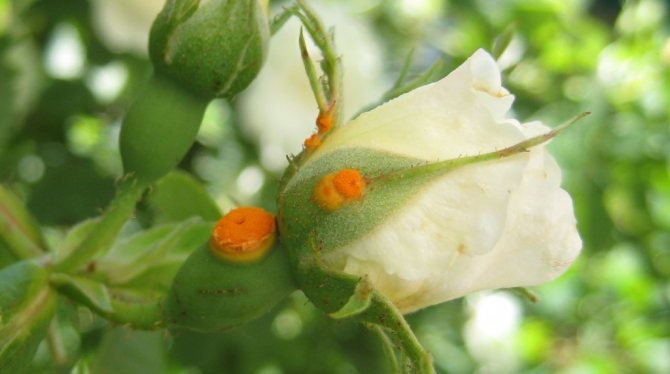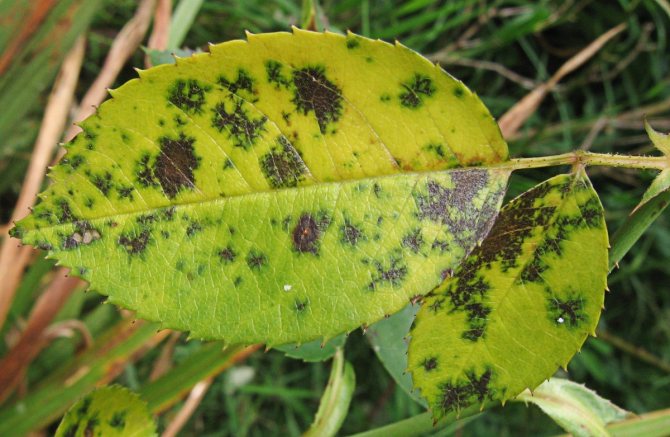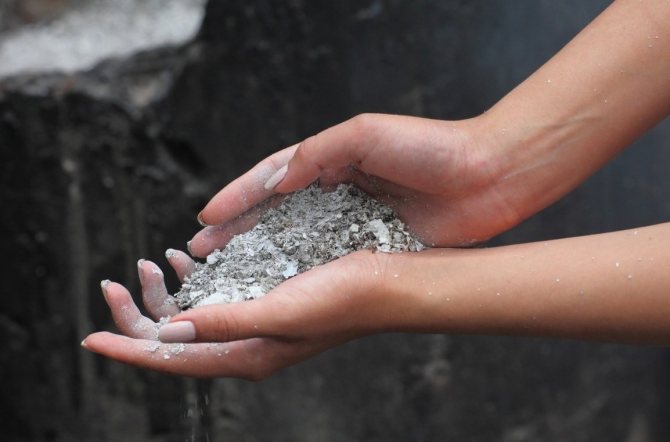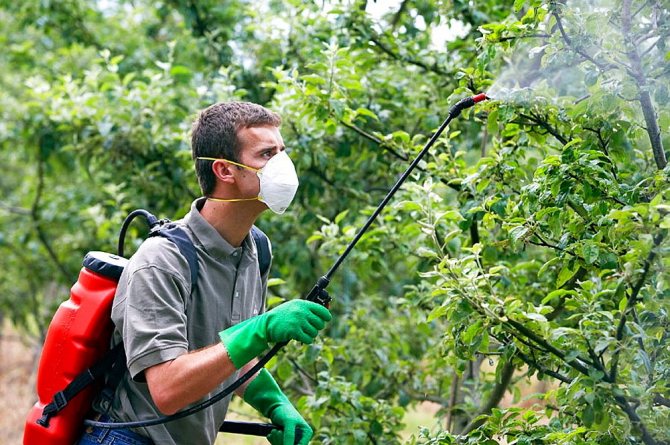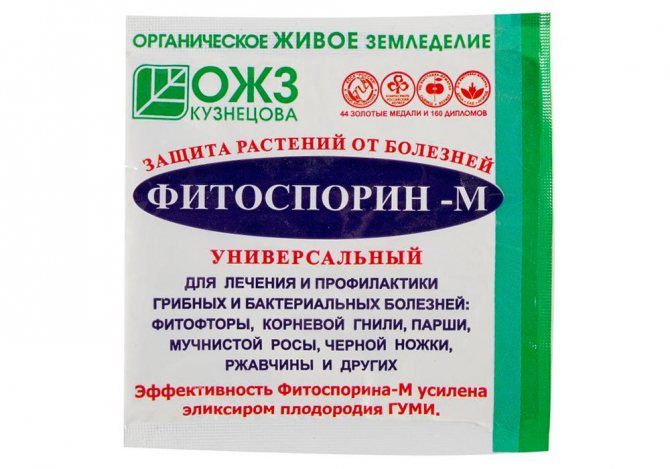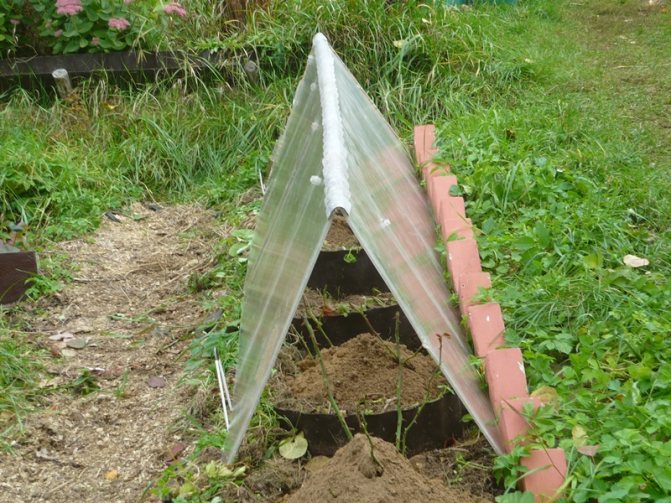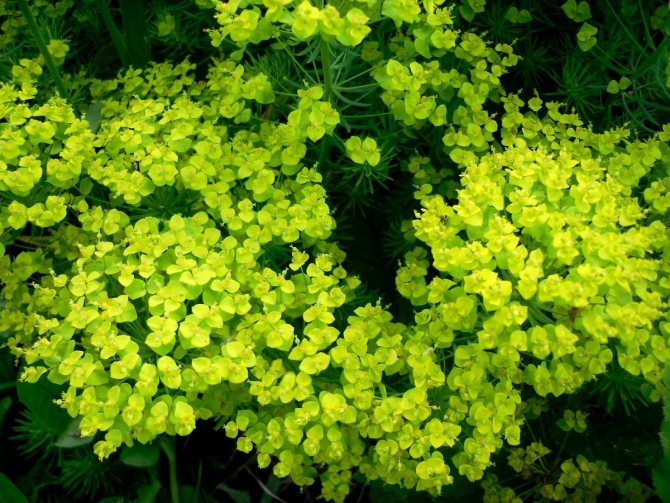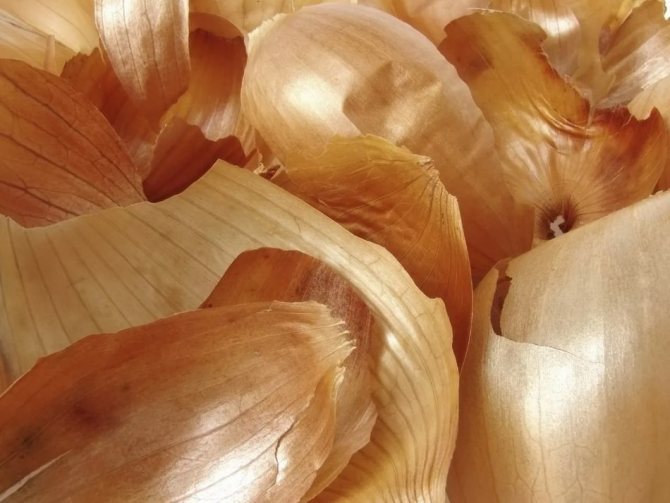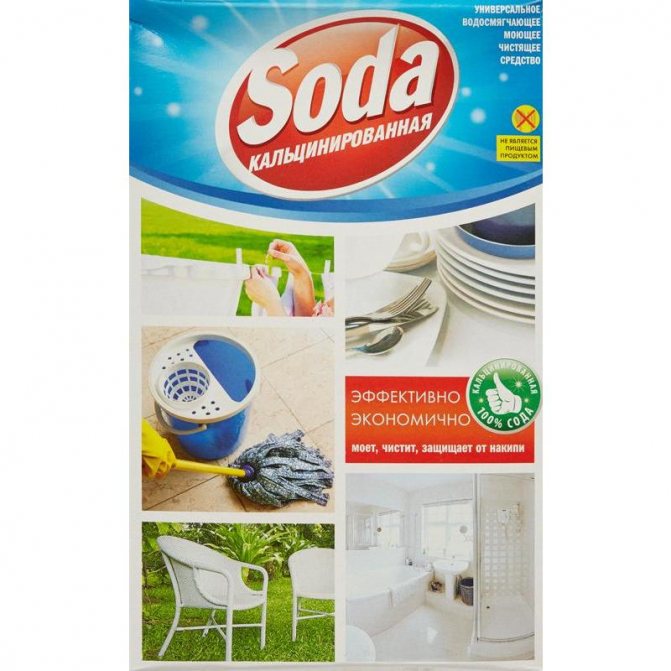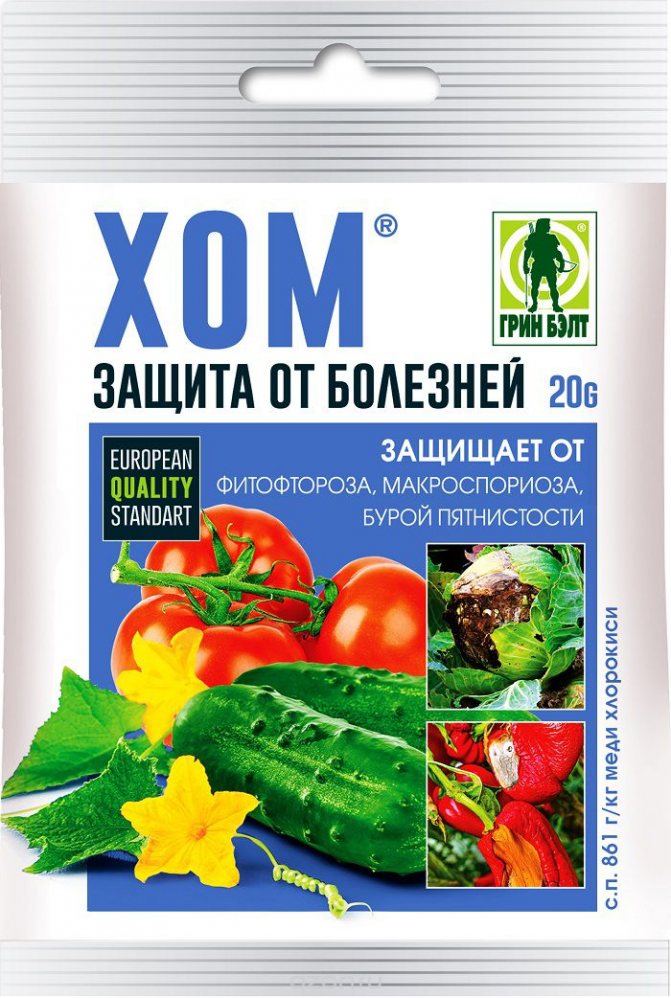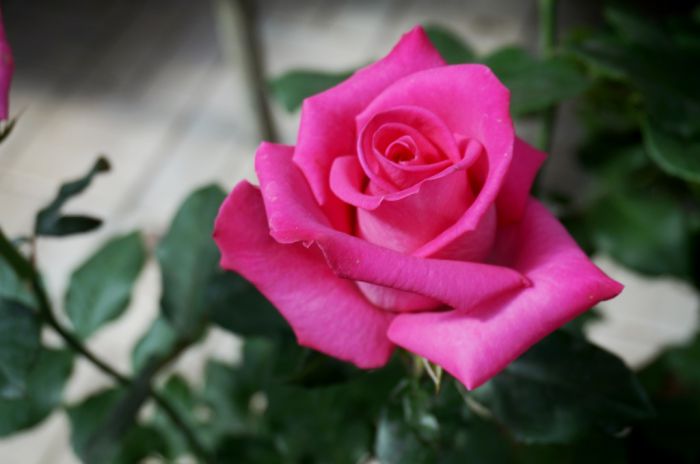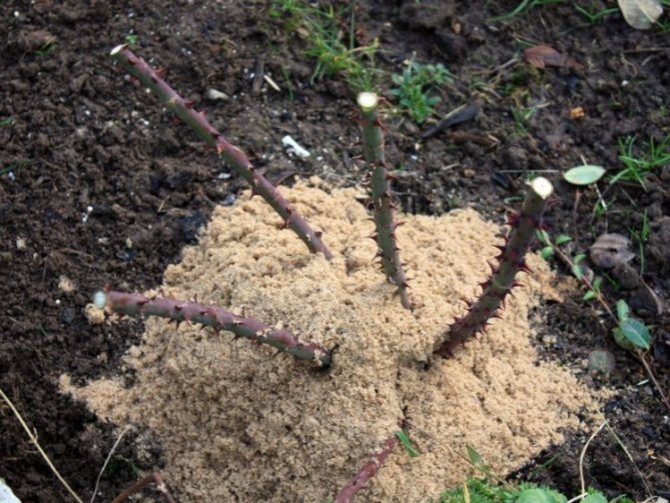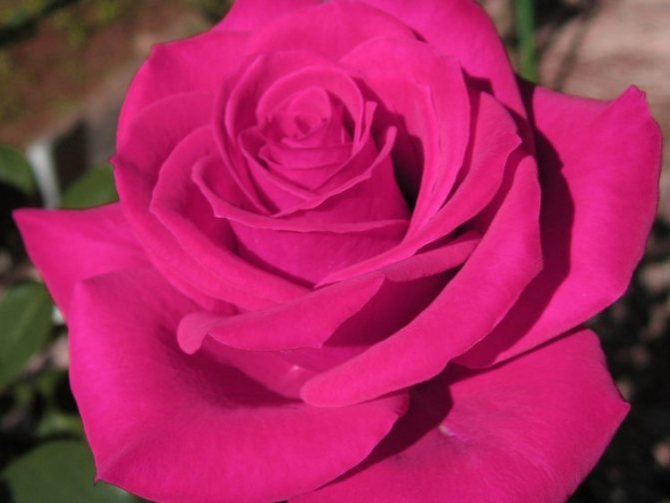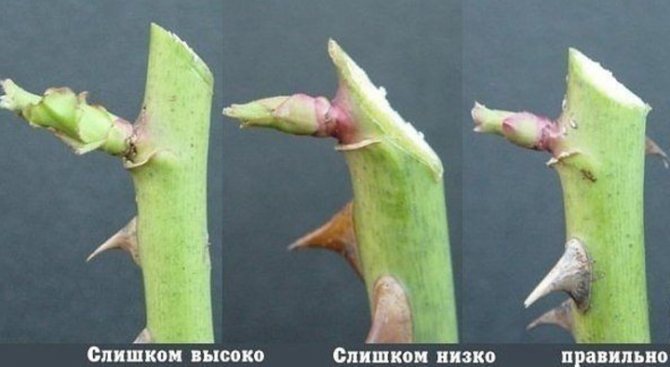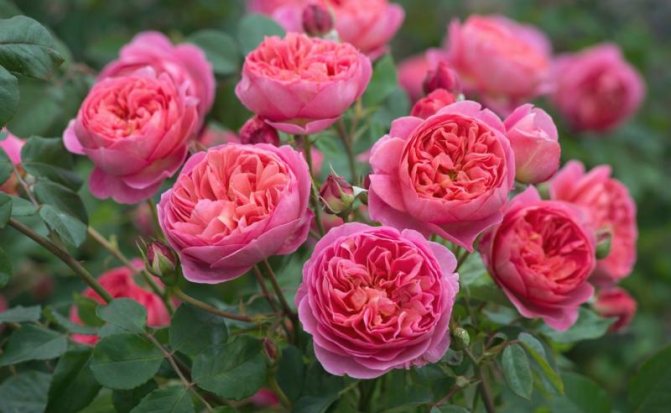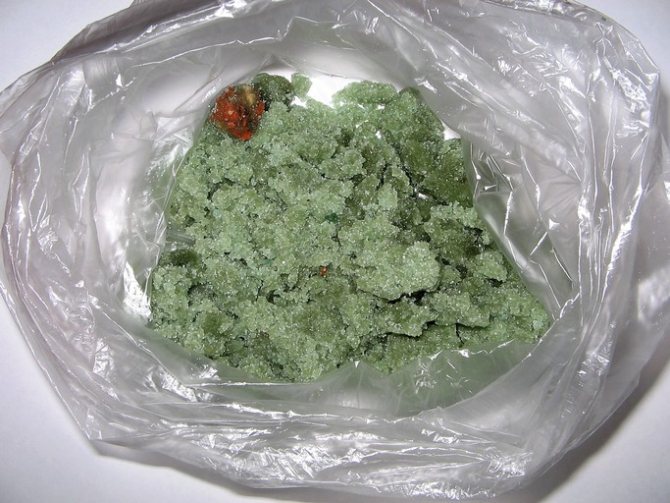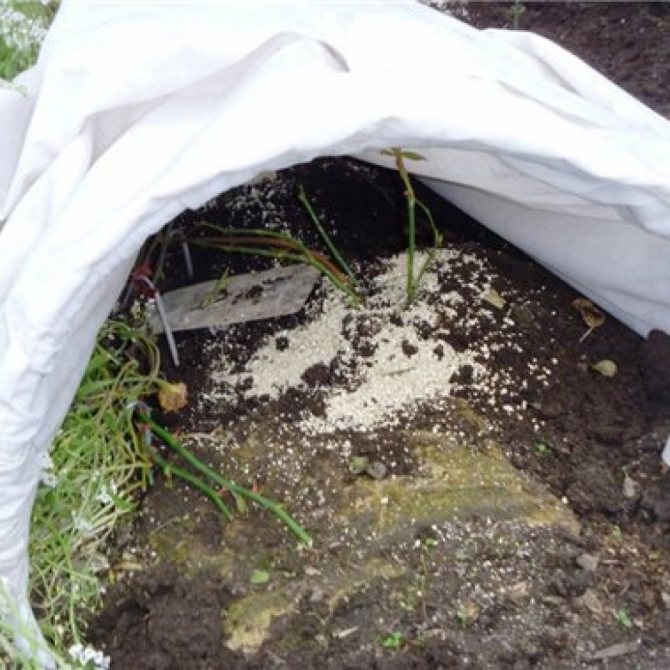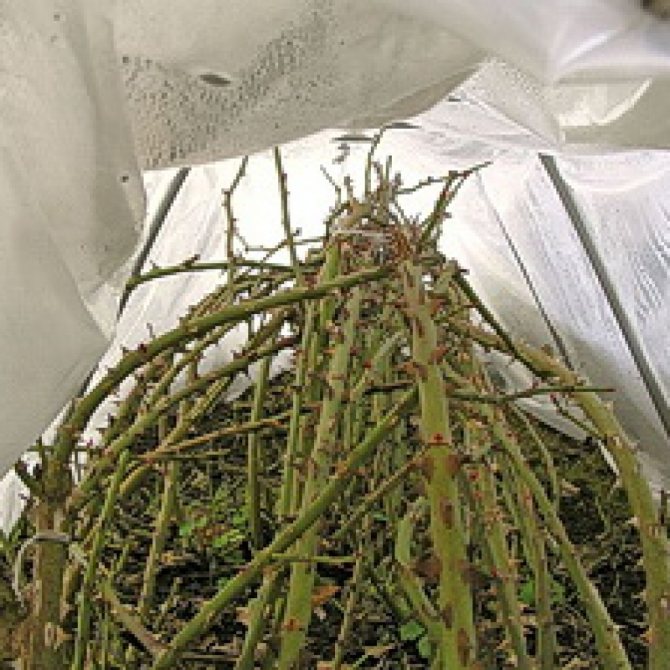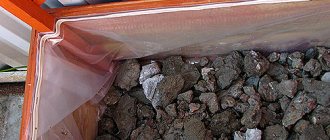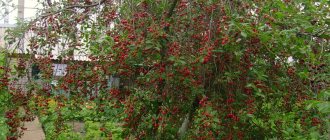Why do you need to cover the bushes for the winter
Shelter of roses is undoubtedly the most important component of the high-quality preparation of flower bushes for frost in a country house or a plot of a private house. Naturally, the main purpose of the shelter for the winter is to help the bush survive freezing temperatures, freezing winds, bad weather, in order to start growing normally in the spring and further please with its lush and beautiful flowering.
The correct winter shelter for roses performs 3 essential tasks:
- Protects from cold and dry winter winds. If the plants are left unprotected in the open field, moisture will evaporate from the plant due to dry and strong winds in winter. Competent protection will prevent drying out, it will retain moisture in the plant throughout the winter until spring comes.
- Protects flowers from temperature extremes. An optimal air-dry shelter helps "smooth corners" by protecting plants in the event of sudden changes in temperature.
- Creates a favorable wintering environment. The shelter maintains its own microclimate, in particular the moisture level normal for the plant.
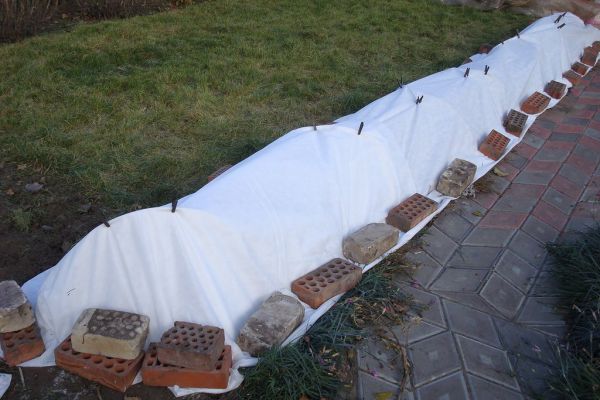
Note! Despite all the benefits, shelter can be dangerous if done right! Moisture can accumulate under it, which will lead to waterlogging and supporting the plant. In addition, such an environment is very favorable for the development of fungi and pathogenic microorganisms. Therefore, it is very important to do everything carefully, according to the rules. This is especially true for novice gardeners.
What types of roses need to be covered for the winter? Climbing roses, hybrid tea, bush, floribunda, standard, and ground cover roses need winter protection (although they are considered winter-hardy, it is better to cover them in cold regions).
Roses that do not require shelter: park roses, hybrids of rugosa, alba, spinosissima, canadian roses, rose hips.
"Topaz": description of the drug
The drug "Topaz" is one of the fungicides - substances that are capable of destroying and preventing further development of spores and mycelium of pathogenic fungus. Thanks to this, "Topaz" can be called the most effective and safe fungicide against powdery mildew and rust. It is also used for preventive purposes, for which plants are sprayed at the beginning of their growing season.
It is noteworthy that Topaz can be used for stone and pome fruit, vegetable crops, for almost all ornamental plants (including indoor flowers), as well as for grapevines. Fungicide "Topaz" according to its instructions for use can be used for prophylactic and therapeutic purposes when processing the following list of plants:
- grapes;
- cherry;
- cloves;
- strawberries;
- gooseberry;
- raspberries;
- cucumbers;
- peach;
- roses;
- black currant.
Important! The Topaz preparation has a limited shelf life, which is only 4 years. Please note that using an expired chemical can cause significant damage to the plants, as well as render their fruit unusable.
When to cover roses for the winter: optimal timing
In order not to harm the flowers, it is very important to take shelter in the fall at the right time. After all, if you do this too early, then the plants can dry out, and if it is too late, then freeze slightly, which will lead to their weakening or even death.
When do you need to cover the bushes in the open field for the winter, in what month? The optimal time for shelter is when a stable negative temperature is established (about -5-6 ° C). At the same time, there is no need to immediately rush to perform the procedure for preparing the bush for winter on the very first frosty day, because warming may still return.
Also, when choosing the optimal timing, you need to focus on the condition of the soil: the ground is frozen at least one centimeter, and at the same time does not thaw during the day.
Advice! To perform the procedure, you must choose a dry day, no precipitation.
Shelter terms for roses in different regions of Russia differ:
- In the middle lane (Moscow region) - end of October, first half of November.
- In Siberia, in the Urals, in the North-West (in the Leningrad region) - second half of October.
- In the South (Krasnodar Territory (Kuban), North Caucasus) - second half of November.
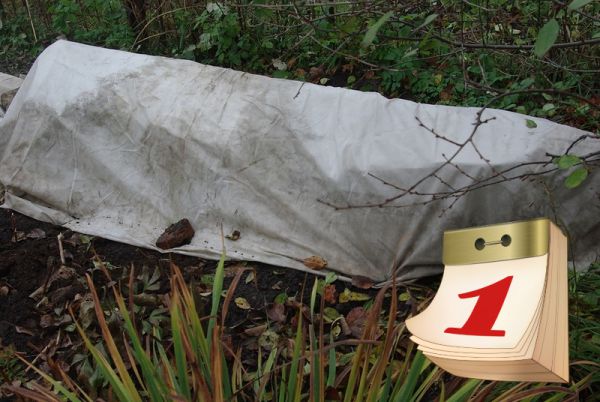

What is the essence of autumn rose care activities
Work in the rose garden related to the preparation of flowers for winter begins in September. Caring for roses during this period, first of all, is aimed at the gradual adaptation of the plant to the cold and soft entry into the dormant period. Autumn work is no less than summer work, because you will need to remove both leaves and flowers, properly feed, reduce watering, prepare for pruning and shelter. If you let everything take its course, then expect the death of the plant in the first winter. The meaning of all activities is that the plant prepares for the cold weather gradually, redirecting nutrients from the tops of the shoots to the roots.
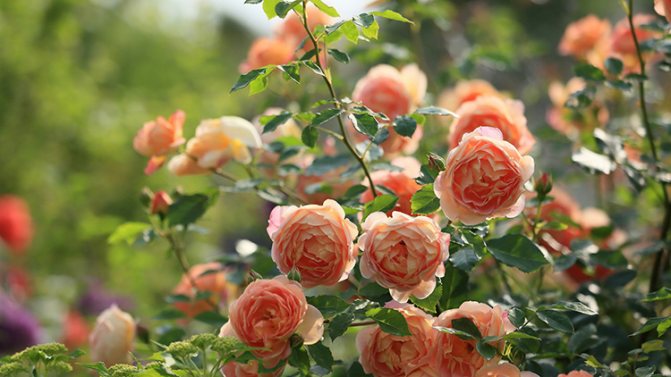

The better the preparatory stage goes, the more you will rejoice in the spring of greening and blooming bushes.
Preparing roses for shelter
Required in the fall in advance prepare rose bushes for shelter for the winter:
- It is necessary in advance feed roses with phosphorus-potassium fertilizers.
- Immediately in front of the shelter, you need prune bushes.
- Before sheltering, you need pluck all the leaves from the plant... If this is not done, they will begin to rot, rot, which can lead to rotting of the entire bush, or pathogens are simply activated on the leaves.
- It is necessary completely remove all plant residues around the bush: leaves, shoots after pruning, weeds.
- After trimming, you need to make preventive treatment for diseases copper-containing preparations, for example, Copper sulfate, Bordeaux mixture, or Hom, Oxyhom, or spray with solutions of other fungicides, for example, Skor, Topaz. Handle in compliance with safety precautions!
- The next step in preparing for shelter is bending shoots to the ground... but not all roses can and should be folded down, this must be done with climbing roses, young standard roses, as well as with those specimens that lend themselves well. Rules of Procedure: No way you can not bend the branches of a rose during frost, because at low temperatures, the stems become fragile. If you bend the shoots during the onset of frost, then the bark at the fracture site will crack, and the cracks will become a vulnerable spot for infection. Or the escape will simply break or be severely damaged.
- You need to bend it down carefully... If you understand that the shoots are difficult to give in and do not want to lie on the ground, then you do not need to bend it down by force, because they can be damaged. You can, for example, tie a rope to the shoots and fix it to a hook in the ground and gradually pull the shoots to the ground.
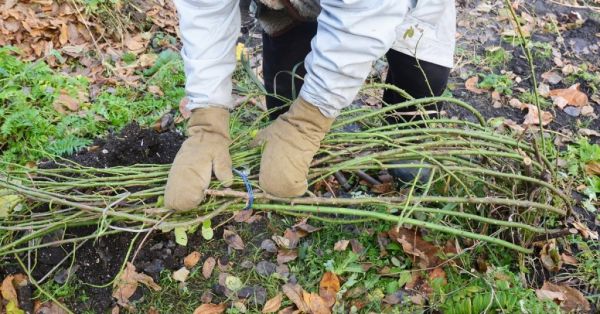

- You can bend and immediately fix all the shoots to the ground with a wire brace.
- Or, you can tie all the shoots with a rope, bend them down and fix them by the rope to the peg. However, natural fiber ropes should not be used because they can rot. Polypropylene twine is suitable.
- You can also fix each shoot separately at the ground and several shoots with hooks. But this is a more time consuming option.
Important! Do not bend and lay the shoots of roses directly on the ground. You need to lay the shoots on some kind of insulating material, for example, boards, coniferous spruce branches, which you previously laid.
- Why do you need spud the bushes with garden soil... Such hilling is very useful, because the soil is a good heat insulator, protects the roots and shrub from frost and drying out. Hilling rules: The procedure must be performed at the first negative temperatures.
- It is optimal to use a mixture of garden soil, sand, peat. The mixture must be dry.
- The soil should be poured into the center of the bush.
- On one bush, the height of the earthen layer is about 25-30 centimeters. The lower buds should be well covered.
- It is categorically impossible to rake the earth from the root zone, because the soil layer above the roots will become thinner, and exposing the roots can provoke their freezing.
- Also, you can not take soil next to areas where roses grow.
- Do not huddle them in wet weather or damp soil! The procedure should be performed on a dry, clear day!
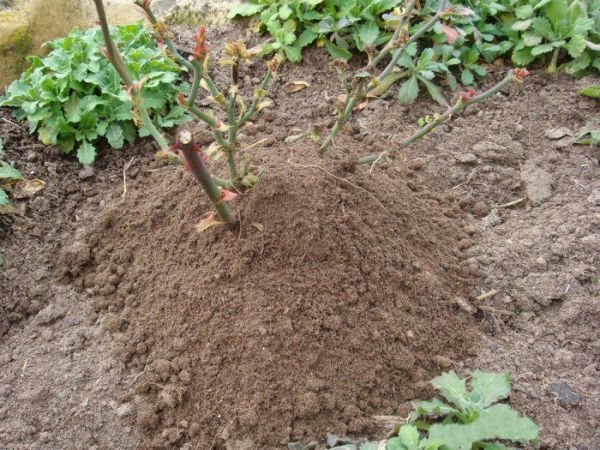

Note! Not everyone supports the method of hilling with earth, because it can cause the bushes to dry out during thaws, and in case of sharp frosts after warming, cracking of the bark. therefore do not spud roses with earth in regions with a possible sharp warming in winter, but in regions with cold winters (Siberia, the Urals, the Leningrad region), the procedure is not dangerous.
Precautions
Fungicide Topaz is a substance of hazard class 3, toxic to fish. The preparation is not dangerous for birds and insects. When working with the substance, observe safety precautions.
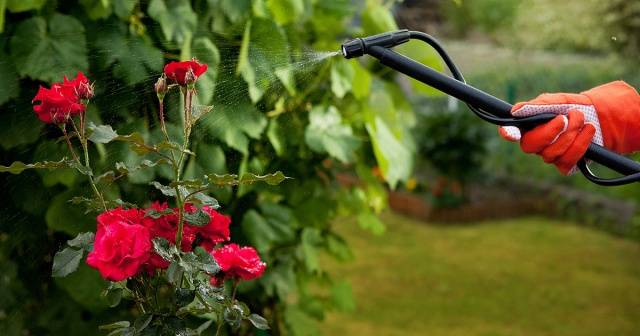

In the process of applying Topaz fungicide, it is forbidden to smoke, eat or drink. Work is carried out on a dry cloudy day or in the evening. Permissible wind speed - up to 5 m / s.
When working with a solution, it is important to protect the skin and respiratory organs. It is better to use a respirator and protective suit. People without protective equipment and animals should be kept more than 150 m from the treatment site.
Advice! If Topaz comes into contact with the skin, rinse the site of contact thoroughly with water.
When sending Topaz fungicide, you must drink 2 glasses of water and 3 tablets of activated carbon, induce vomiting. Be sure to see a doctor.
How to cover roses for the winter: suitable materials
The main requirement for a covering material to protect roses in winter is that the shelter should protect the cold wind and frost, and from bright sunlight during thaws and in spring.
Important! The most important thing to look for when choosing materials for covering roses: the material must breathe! Without proper air circulation, the bushes will not be able to survive the winter normally. There is a high probability of damping out, waterlogging of the plant.
Suitable materials for covering roses:
- Nonwoven fabric (agrofiber, spunbond, lutrasil, geotextile). Wonderful breathable materials that keep moisture out of the plants (although technically they are moisture permeable). In this case, it is better to use white agrofibre, because the black material heats up quickly, which is dangerous during a thaw. It is best to use a material with a density of at least 60 g / m², preferably in 2 layers (the more severe the winter, the higher the density should be). When using this material, an optimal moisture-air regime is maintained around the roses. Agrofibre in the photo:
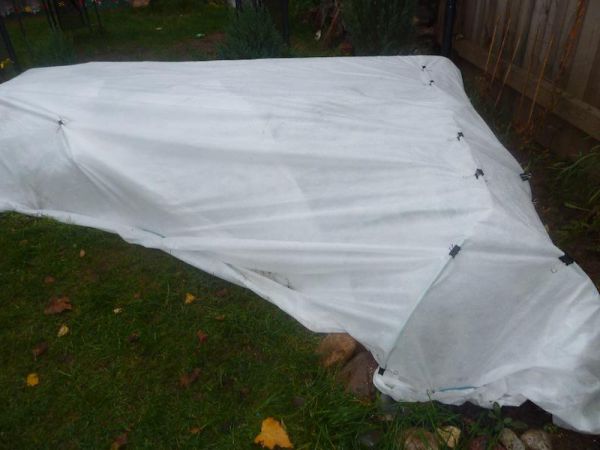

- Snow... The best insulation. However, it must be used in combination with other materials. The best option is to throw snow over the agrofibre, so that there was an air gap between the bushes and the shelter.


- Sugar bags. A controversial option. However, this polypropylene material is an alternative to agrofiber. Breathable material that does not allow moisture to pass through.However, not all gardeners are delighted with this material, so it is better to use spunbond.
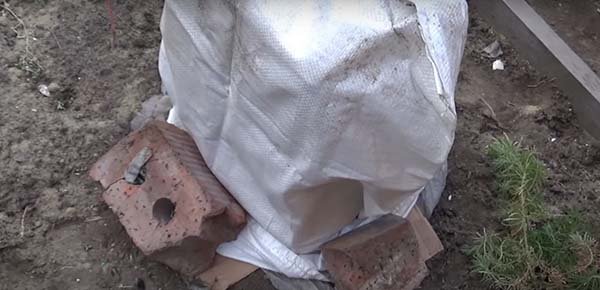

Fungicide "Topaz": compatibility with other drugs
The compatibility of the Topaz chemical with other chemicals may not be spelled out in its instructions for use, however, for the comprehensive prevention of various plant diseases, this has to be done regularly. For this purpose, the preparation "Topaz" for plants can be mixed with such agents as:
- "Cuprosat", which allows you to fight late blight and circosporosis;
- Topsin-M, which is used against scab, moniliosis, gray rot, anthracnose;
- "Kinmix" is a preparation for the control of larvae of agricultural pests;
- "Horus", used for the prevention and treatment of Alternaria, fruit rot, clotterosporia, coccomycosis.
All of these drugs are fungicides, but differ from each other in the active substance. Due to this, when combining drugs, it is not necessary to reduce the doses, but you can use them according to the instructions.
What can not be covered with roses for the winter
And what can not be used to cover roses for the winter?
- Cardboard, cardboard box. Of course, it is able to protect wind plants well, but it gets wet very quickly, becomes waterlogged, and freezes during freezing.
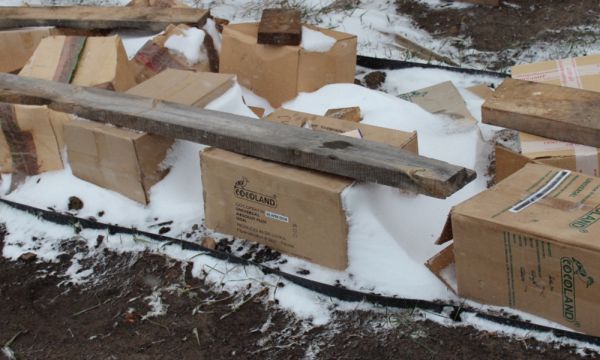

- Hay or straw. In theory, such materials are very good because they have good thermal insulation properties. But in practice, mice can easily grow in hay or straw and can damage your roses.
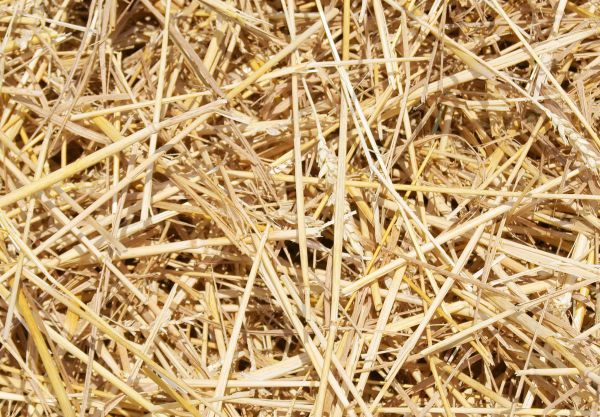

- Polyethylene film... The material is completely unsuitable for roses, because it does not breathe at all, and this is extremely critical when a plant is wintering. The only option when it is appropriate to use the film when covering roses: in a rainy winter, in order to protect the bushes from excessive waterlogging, you can hang it on support posts in the form of an awning over agrofibre (i.e. make a film tunnel shelter on arcs), while the film should not hang vertically or touch the spunbond.
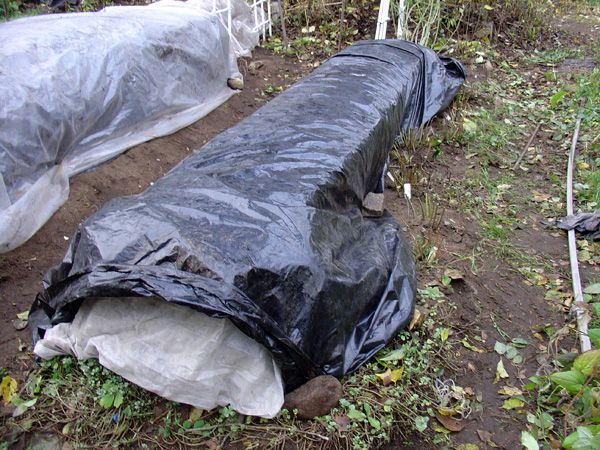

- Roofing material. They should not be covered for the same reason as with plastic wrap. In addition, the material is heavy, under the weight of the snow it can bend and damage the bush.


- Metal buckets, tanks. Not only do they keep air out, they also accumulate cold. It turns out that they are anti-insulation.
- Plastic buckets, plastic basins... Although plastic products are able to reliably protect from wind and cold, they do not breathe, normal ventilation is impossible when using them, which can have a detrimental effect on colors.
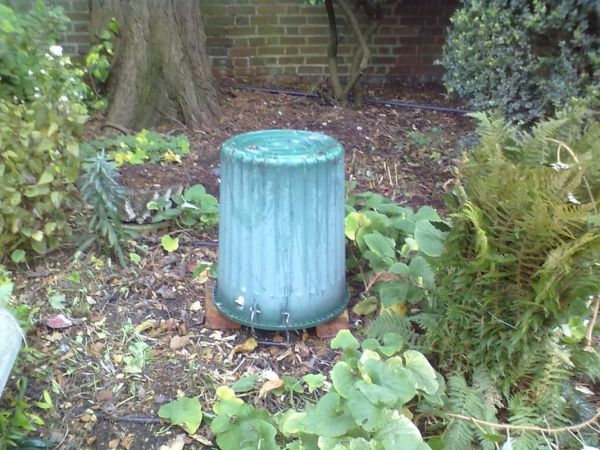

It is also not recommended to spud roses before sheltering for the winter with the following substances:
- Sawdust. This natural component will cake, absorb moisture, and can rot. It turns out a favorable environment for the development of pathogens.
- Sand... It also accumulates moisture, freezes completely, about the same situation as with sawdust.
- Hilling with garden soil (or a mixture of soil, peat and sand) is a controversial method, as mentioned above, when it warms in winter, the bush is able to weed out. It is highly discouraged to use this material in regions with unstable winter weather and sharp temperature fluctuations (i.e. sudden sharp thaws)
- Earth from under the roses. As mentioned above, you cannot use garden land from plots where roses are grown.
How to properly cover roses for the winter: methods, schemes, instructions
To date, several ways have been invented for the autumn shelter of roses for the winter. Let's consider the most optimal and good technologies.
Air-dry shelter on arches
An air-dry shelter on arcs is the most optimal and convenient way to prepare bushes for winter in the fall.
By the way! This method is very good, because there must be an air gap between the covering material and the bushes.
For low or bent to the ground roses, you can use arcs (for example, from polypropylene pipes). An example in the photo below:
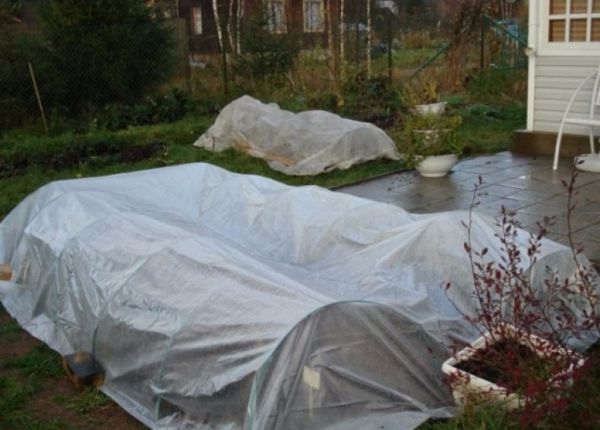

And for tall bushes that do not bend (for example, standard), it is better to use carcass (round and elongated or in the form of a wigwam, as in the photo below).
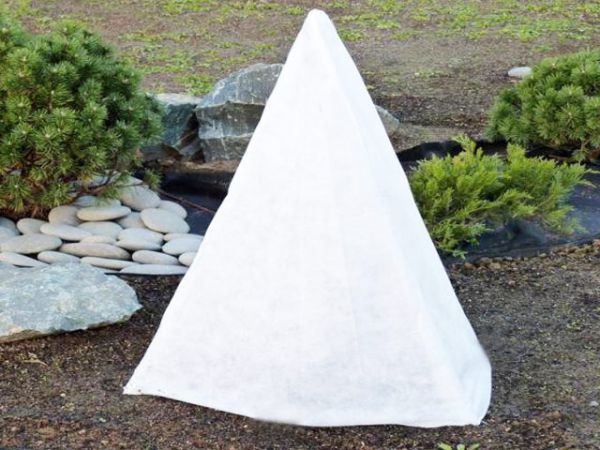

Scheme of sheltering roses in an air-dry way on arcs:
- Install a frame that is suitable for the height of the roses. It can be a wire frame or conventional arcs. In this case, the arcs must be placed higher and wider than the bushes so that they do not touch the shoots and so that when the material is lowered under the weight of the snow, the material also does not touch the shoots.
- Spread spruce branches, birch branches, spruce litter or dry leaves (but only those crops that do not rot, for example, oak leaves, from ferns) or reeds around the bush.
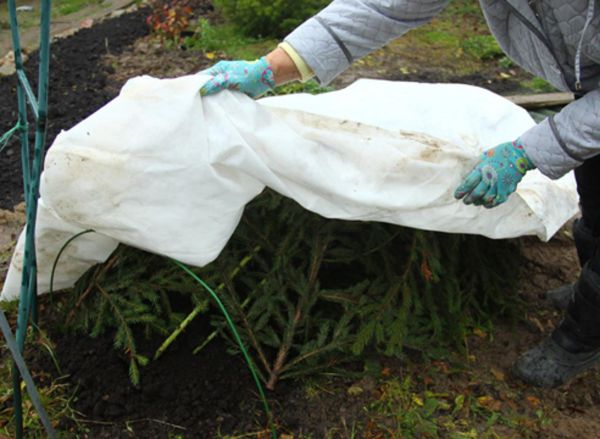

- Pull the agrofiber over the frame. In this case, the density of agrofibre should be at least 60 g / m², it is better to cover it in 2 layers.
- On all sides, you need to securely fasten the spunbond around the perimeter with bricks, stones or boards.
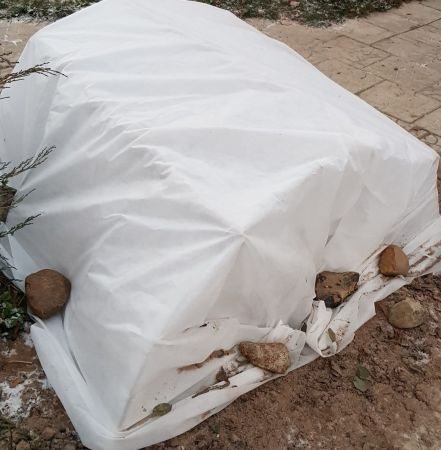

Note! Remember, natural resources need to be treated with care. You should not cut off spruce branches (or birch branches) straight from the trees; what can be taken from the ground in the forest is also suitable. Fresh spruce branches do not have to be used; dry is also great.
Air-dry shelter without arcs
The most optimal air-dry shelter technology can be applied without the use of arcs. However, this method is simpler, but also less preferable, because agrofibre under the weight of snow can sag heavily and damage the shoots.
Step-by-step instructions for an air-dry rose shelter without arcs:
- Cover the bush with spruce branches or dry birch branches, dry oak or fern leaves.
- Now you should cover the roses on top in 2 layers with spunbond.
- Anchor the geotextiles securely on all sides with boards, bricks or stones.
Important! When using the air-dry method, you need to slightly open the covering material for ventilation during warming!
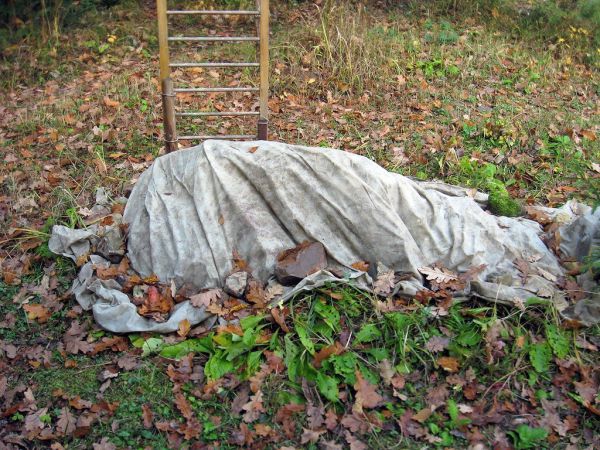

Hilling with earth
About hilling roses with earth was described in detail above in the paragraph about preparing bushes for shelter. This method is not suitable for everyone. It can only be used when growing flowers in cold regions with frosty winters without thaws. This technology can also be used as an independent way to cover roses.
Important!Hilling with earth is not a self-sufficient way! In any case, it cannot be used without further cover with a thick layer of snow. In addition, this technology is only suitable for regions with frosty winters, therefore, in any case, you need to fully cover the roses.
It turns out that after hilling with earth during the first snowfall you need to cover the bushes with a thick layer of snow... And in the future, with precipitation, you need to throw snow.
Better yet, first spud the roses with earth, or rather a mixture of garden soil, peat and sand, and then make an air-dry shelter from arches or frame, covering material, and spruce branches, birch branches, coniferous litter or dry leaves.
Shelter with a wooden box or house
Sheltering roses with a wooden box or a house made of hammered boards is a method that is appropriate during severe winters with strong frosts and winds. But again, this technology cannot be used on its own. In any case, you must first make an air-dry shelter. In this case, it is very important that a wooden house (as in the photo below) or a wooden box have holes for normal air circulation.
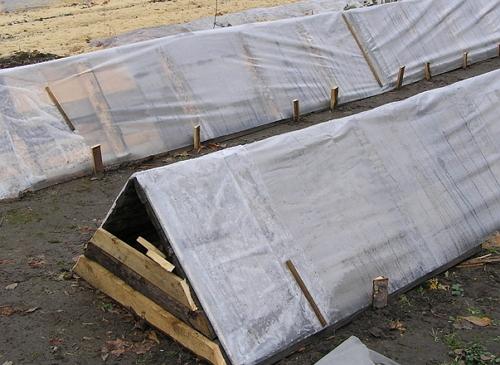

General instructions for sheltering roses
You can cover flowers for the winter using the following algorithm:
- Preparation for the procedure: feeding, pruning, removing leaves.
- Hilling with earth (in certain climatic conditions).
- Bending the shoots to the ground (for specific types of roses) on an insulating material (boards, spruce branches).
- Fixing the shoots to the ground with staples or a rope to the hook (if the shoots were tied).
- Install the finished wire frame or arcs on top.
- Put spruce branches, birch branches, dry oak leaves on the bush.
- Then cover with agrofibre on top (with a density of at least 60 g / m²), preferably in 2 layers.
- Now you need to carefully fix the agrofibre, for example, line the perimeter with bricks, stones, earth. In this case, you need to fix it on three sides, one side must remain open for normal ventilation. And when the air temperature stays in the region of minus 10 degrees, you need to fix the open part of the agrofibre.
Important! Regardless of the method of shelter, after the snow falls, you need to periodically cover the shelter with a layer of snow. The layer height is about 0.5-0.7 meters. After all, snow is the most reliable insulation for bushes. This is especially important if you just made hilling with earth.
At the same time, you cannot take snow around the bush, because in this way you can leave the root system without a protective layer.
Shelter rules and features in different regions
On a large territory of our country, there are many flower growers dealing with roses. And in different zones, due to different weather and climatic conditions, the cultivation technique and the features of the autumn shelter for the winter are different.
Middle lane (Moscow region)
In the Central lane (in particular, in the Moscow region), it is necessary to protect roses in the fall, because winters can be quite cold. The situation is especially dangerous when there is little snow.
For the Middle Lane, an air-dry shelter for the winter, which was described above, is ideal. It is optimal to use agrofibre with a density of 60g / m² in two layers.
Siberia and the Urals
Growing roses in the open field in Siberia and the Urals is impossible to imagine without shelter for the winter. This procedure is fundamental to autumn care, thanks to it you can save beautiful flowers in harsh winters.
The air-dry shelter method is also ideal. In this case, it is better to use dense spunbond (density 150g / m²). In addition, you can put a wooden box or a house made of boards on top, but it is important that they have holes.
North-West (Leningrad region)
In the North-West of Russia (in particular, in the Leningrad region), it is necessary to cover flowers for the winter without fail. Otherwise, they can freeze out, weaken greatly or even die. Shelter rules are the same as for Siberia and the Urals.
South of Russia
Like the South of Russia, for example, the Krasnodar Territory (Kuban), the North Caucasus, roses do not need shelter in the fall, because the winters are quite mild and warm. But if the weather unexpectedly "pleases" with frosts, you can cover the bush from all sides with spruce branches.


You need to open roses in spring gradually, and this is a very important point! After all, if you remove it abruptly, the plant will experience stress, which will have a bad effect on its growth and flowering. First, open the agrofibre on one side only. After a few days, the rest of the parts, then everything else. Also, the first days after removing the shelter, you need to shade the bushes from the bright sun to protect the plant from awakening the buds too early.
The advantages of using "Topaz" at their summer cottage
As you have seen, "Topaz" belongs to fungicides with a very wide range of applications. Even despite the fact that today on the market you can find many analogues of "Topaz", the choice should be given to this particular drug, since it differs in a number of advantages:
- "Topaz" is exactly the chemical that has a long period of exposure to fungal spores. Thanks to this, preventive spraying can be done only twice a month, reducing the pesticide load on plants and soil.
- Instant absorption of the drug by plants allows you to stop the growth of fungal spores within 2-3 hours after treatment.
- The rate of use of the drug is very low, so one sachet is enough for almost the entire season, even if its use is necessary both in the garden and in the garden.
- "Topaz", unlike other preparations, can be used for a very large number of plants.
- "Topaz" is used practically at all stages of the growing season of plants: from the beginning of growth to the beginning of fruit formation. Even when ripe fruits get on, the toxic effect of the drug remains minimal, which allows them to be eaten without fear of poisoning.
- "Topaz" is compatible with many other drugs, which allows it to be used for complex plant treatments.

